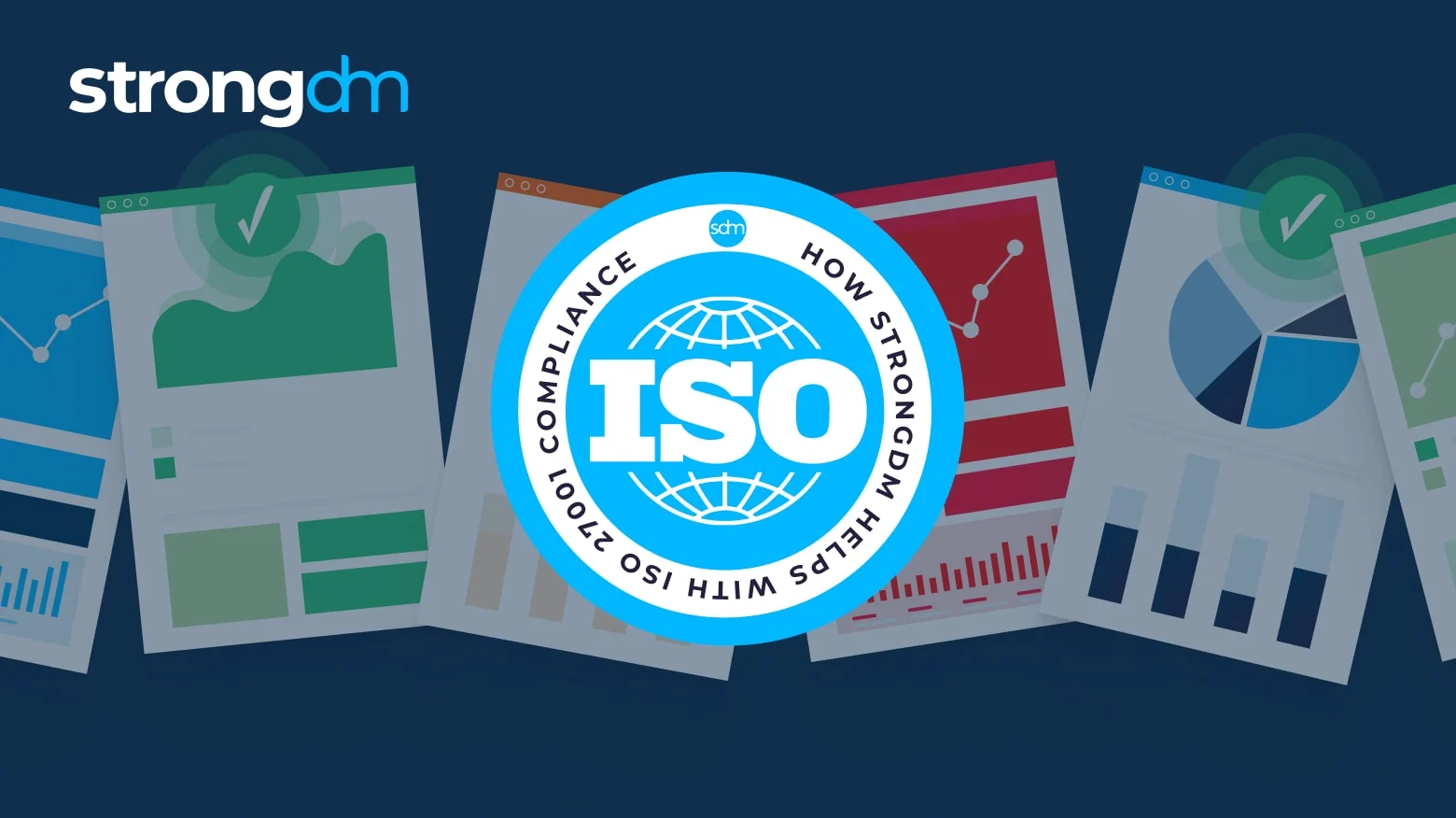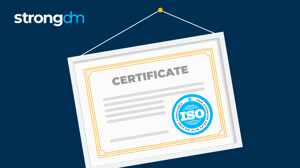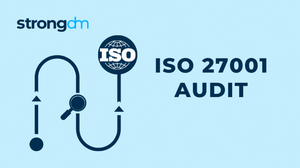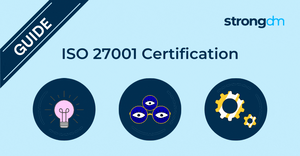
- Role-based, attribute-based, & just-in-time access to infrastructure
- Connect any person or service to any infrastructure, anywhere
- Logging like you've never seen

Summary: To become ISO 27001 certified, organizations must align their security standards to 11 clauses covered in the ISO 27001 requirements. In this article, you’ll discover what each clause in part one of ISO 27001 covers. We’ll also take a big-picture look at how part two of ISO 27001—also known as Annex A—can help your organization meet the ISO/IEC 27001 requirements.
ISO 27001 Requirements
Many organizations reference the ISO 27001 international security standards to guide their Information Security Management System (ISMS) implementation and design. While companies are not legally required to align with ISO 27001 standards, some pursue ISO 27001 certification to demonstrate alignment with data security best practices.
The International Standards Organization updates the requirements of ISO 27001 every five years. The most recent edition—ISO 27001:2022—uses the same two-part framework established in the ISO 27001:2013 requirements.
Part one contains 11 clauses that give a high-level look at the requirements and essential documentation your organization needs to apply while building an ISMS. Part two includes 93 recommended controls organizations can implement to meet the ISMS requirements.
The ISO 27001 Introduction: Clauses 0 to 3
Clauses zero through three in the ISO 27001 guidelines detail the overarching purpose of the security standards and the scope of the requirements of ISO 27001 certification.
While these clauses don’t expressly contain ISO 27001 requirements, they set the stage for the rest of the standard by defining commonly used terms and providing context through normative references.
ISO 27001 Requirement #1: A Defined ISMS Project Scope
Every organization’s ISMS implementation looks different depending on factors like:
- Relevant external and internal stakeholders
- Regulatory compliance requirements
- Industry-specific security standards
- Client needs and contractual requirements
- Internal resources available
The first requirement in clause 4 involves defining the scope of an organization’s ISMS design and implementation project. This scope document offers context for the implementation’s boundaries and chosen controls based on the organization’s specific needs, including what industry they’re in, what compliance requirements they must meet, and their clients’ stakeholder expectations.
To meet this requirement, the company must create an ISMS Scope document outlining the implementation process and detailing how teams will monitor and improve the ISMS. This document gives auditors essential context they’ll use to evaluate a company’s ISMS design and controls.
ISO 27001 Requirement #2: Demonstrated Commitment from Leadership
For an ISMS implementation to succeed, teams need a clear commitment from their senior leaders. This commitment is especially crucial for companies pursuing ISO 27001 certification since the project will require ongoing time and resource allocation.
The second requirement detailed in clause 5 involves the senior leadership team drafting and signing off on an Information Security Policy Statement. This policy demonstrates leadership’s commitment to the project to employees, clients, and auditors. It also details the roles involved in the implementation, monitoring, and maintenance of the ISMS, assigning specific responsibilities to teams or team members.
ISO 27001 Requirement #3: Clear Security Objectives
Clause 6 of the ISO 27001 ISMS requirements involves defining the business case and risk management strategy an ISMS implementation is designed to support. Creating meaningful security objectives begins with assessing security risks and opportunities to better manage security procedures.
With the risk assessment and the company’s strategic goals in mind, companies must establish measurable security objectives that define implementation success and show the ISMS is operating as designed. Organizations use these objectives to plan ISMS implementation and improvement projects and track metrics to determine their success.
ISO 27001 Requirement #4: Resource Provisioning and Allocation Plan
Successful ISMS implementation and maintenance require continuous resource allocation, and clause 7 stipulates how the company will continue to provide resources for improvement. To ensure that the company properly maintains its ISMS, clause 7 requires organizations to provide the following:
- Recorded proof of competence, showing that team members can effectively manage, monitor, and maintain the ISMS
- Confirmation that all employees are aware of their responsibilities as defined in the Information Security Policy Statement and the importance of maintaining the ISMS
- A communication plan to show when and how teams share information about the ISMS with stakeholders and other affected parties
- Detailed documentation—including policies, procedures, and reporting on metrics—showing how the team will meet project objectives and what resources they need to achieve desired results.
These ISO 27001 required documents show auditors that the company has the right resources to maintain the ISMS and detail how employees will support the ongoing improvement of the system.
ISO 27001 Requirement #5: Operations and Process Plan
The documentation required by clause 8 involves the operations necessary to implement and maintain the ISMS. To meet this requirement, companies must create a risk assessment (which companies can use to define the objectives from clause 5) and document how regularly the team will perform future risk assessments.
Once a company has a risk assessment report, the company will also create a risk treatment plan that defines the procedures and processes the company will follow to mitigate risk. As companies perform risk mitigation processes, they must retain detailed documentation of the actions they’re taking to mitigate risk and follow the procedures in their risk treatment plan.
ISO 27001 Requirement #6: Performance Measurement Procedures
Many of the ISO 27001 clauses involve tracking the ongoing success of the ISMS implementation and controls, but clause 9 explicitly requires a procedure for measuring the project’s performance.
To meet these requirements, companies must design ISO 27001 procedures to track, analyze, and evaluate ISMS performance. These procedures go beyond measuring the success of the objectives in clause 5. Clause 9 requires companies to create a plan for monitoring individual control performance, too.
Clause 9 also dictates when and how often employees and senior leadership will audit the ISMS. Internal audits and management reviews must be completed at least once a year, but some organizations may require more frequent audits. These ISO 27001 internal audit requirements generate reports which show auditors an ongoing commitment to improving the ISMS.
ISO 27001 Requirement #7: A Nonconformity and Improvement Logging Process
No company can maintain compliance 100% of the time. Preparing for new risks involves having a plan to handle nonconformities with corrective action. Clause 10 involves creating a plan to address these instances and documenting the changes to address the issue.
Clause 10 also requires companies to log opportunities for improvement. ISO 27001 certification goes beyond following an ISO 27001 requirements list just one time. Companies must recognize that their ISMS is a continuous work in progress involving constant testing, tracking, and iterative improvement. Teams need to record all the changes they perform and the opportunities they find for improvement through testing or audits.
Does Part 2 of the ISO 27001 Contain Requirements?
Implementing an ISMS involves introducing and maintaining relevant security controls. Part two of ISO 27001—Annex A—details all the recommended controls companies can include in their ISMS implementation. Effectively, Annex A serves as an ISO 27001 requirements checklist detailing the four categories of controls required for ISO IEC 27001 compliance:
- People/User Controls
- Organizational Controls
- Technology Controls
- Physical Controls
While Annex A offers recommendations for implementation, there are no strict requirements in this section. However, part of meeting the ISO 27001 certification requirements involves using Annex A to complete a Statement of Applicability document. In the Statement of Applicability, companies must go through each of the 93 controls in Annex A and indicate if they are applying it. If not, they must explain why that control is out of scope or irrelevant to their implementation.
How StrongDM Helps You Meet ISO 27001 Requirements
Limiting user access, defining roles, and creating security controls for access provisioning are essential to maintain ISO 27001 compliance. Plus, companies need to demonstrate the success of their controls with detailed activity logs. However, these tasks can be a challenge without the right tools to automate tasks and maintain records. That’s where StrongDM comes in.
StrongDM’s all-in-one Zero Trust Privileged Access Management (PAM) platform simplifies user access controls, helping you maintain ISO 27001 compliance with ease. Detailed logs and comprehensive reporting streamline audits while provisioning and deprovisioning automation ensure that access to company resources stays secure. IAP helps businesses implement and maintain the people controls necessary to support their ISMS.
From the segregation of duties and password management to asset control and event logging, StrongDM helps your team implement Annex A in just a few clicks. StrongDM can also help your team cover many ISO 27001 controls through one easy-to-use platform.
Make Meeting ISO 27001 Audit Requirements Easy
Is ISO 27001 mandatory? No, but it can make a massive difference in your company’s security posture. Clients expect modern companies to manage their data safely, and implementing an ISMS is an essential step toward securing your company’s data and protecting it from a breach. That’s just part of why many companies choose to follow the ISO 27001 requirements.
While pursuing ISO 27001 certification is a significant undertaking, implementing some controls may be easier than you think. No need to reinvent the wheel—StrongDM helps companies like yours implement ISO 27001 people controls you can count on.
Get started on your ISMS implementation today. Set up your free, no-BS demo and see how StrongDM makes user management a breeze.
About the Author
John Martinez, Technical Evangelist, has had a long 30+ year career in systems engineering and architecture, but has spent the last 13+ years working on the Cloud, and specifically, Cloud Security. He's currently the Technical Evangelist at StrongDM, taking the message of Zero Trust Privileged Access Management (PAM) to the world. As a practitioner, he architected and created cloud automation, DevOps, and security and compliance solutions at Netflix and Adobe. He worked closely with customers at Evident.io, where he was telling the world about how cloud security should be done at conferences, meetups and customer sessions. Before coming to StrongDM, he lead an innovations and solutions team at Palo Alto Networks, working across many of the company's security products.

You May Also Like
![Understanding ISO 27001 Controls [Guide to Annex A]](https://discover.strongdm.com/hs-fs/hubfs/iso-27001-controls.jpg?width=300&height=168&name=iso-27001-controls.jpg)




